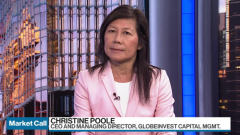Jun 14, 2024
Currency Traders Readying for a ‘Vol Killer’ Summer After Fed
, Bloomberg News

(Bloomberg) -- Investors hoping the coming months would bring an explosion of currency volatility on the back of multiple central bank interest rate moves are in for disappointment, according to option traders.
There were signs currency markets were getting more turbulent when the Australian dollar, euro and yen rallied around 1% after the US reported weak inflation data on June 12. However, those moves fizzled out after Federal Reserve Chair Jerome Powell’s projection for one rate cut this year proved to be a dampener and JPMorgan’s Global FX Volatility Index fell for a second day Thursday — though election angst in France pushed the gauge higher Friday.
Investors now face the prospect of currencies staying in narrow ranges in the northern hemisphere summer, which offers few profitable trading opportunities.
The Fed’s decision “leaves the market data-dependent and essentially reduces the possibility of a quick summer cut to near zero,” said Ruchir Sharma, London based global head of FX option trading at Nomura International Plc. “The market as a result is unlikely to break its recent ranges over the summer months.”
Trading strategies targeted at such a view could depress volatility “meaningfully” in the short-term, Sharma added.
While the Fed left its benchmark rates unchanged as widely expected, it signaled that it now expects to cut interest rates by 25 basis points once this year. That compared with its forecast for 75 basis points of cuts in its March projections.
“The announcement is likely to dampen volatility in the short to medium term,” said Nathan Swami, Citigroup Inc.’s Singapore-based head of foreign exchange trading in Asia Pacific. “The Fed has removed some uncertainty around future policy paths, and this should mean less implied volatility in general.”
Event Watch
A gauge of expected swings in the Bloomberg Dollar Spot Index had climbed back toward its five-year average in recent weeks, having lagged historical levels for most of the year. On average it has shown a tendency to climb through the northern hemisphere summer.
Traders are now watching upcoming events like the French elections, or US economic data such as core PCE — the Fed’s preferred measure of inflation — to see if those can spark big moves in currencies. While the US election looms as a volatility catalyst later in the year, Goldman Sachs Group Inc. suggested the first presidential debate on June 27 has the potential to trigger swings.
In France, President Emmanuel Macron’s snap-election call has roiled bond markets, weighed on the euro and propelled haven currencies like the dollar and Swiss franc. After its decline on Wednesday and Thursday, the JPMorgan Global FX Volatility Index jumped on Friday.
“It’s reasonably likely that the first debate serves to crystallize attention more clearly over the summer on the election, potentially much earlier than the historic experience might suggest,” Vickie Chang, a New York based strategist wrote in a June 13 note. “We think there is a better case than usual for having some of that exposure ahead of the event.”
Should volatility remain subdued, that would be good news for carry traders, who borrow currencies where rates are low and invest where they are high, often in emerging markets. They have come under pressure recently from a spate of election surprises from Mexico to India.
For Calvin Yeoh, portfolio manager at Blue Edge Advisors, the Fed has distinguished hopes for more currency swings in the short-term at least.
“CPI and FOMC on the same day positioned Powell to be the Oppenheimer of a market meltdown, but his opening statement might have been ‘Now I am become death, destroyer of vol’,” he said. “It’s a vol killer for now, but to be honest it’s not clear yet if the storm has passed or we’re in the eye of the storm.”
--With assistance from Carter Johnson and Sydney Maki.
©2024 Bloomberg L.P.





